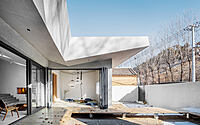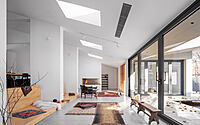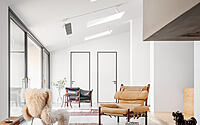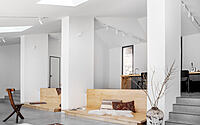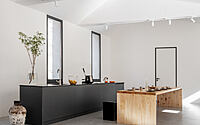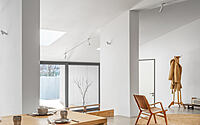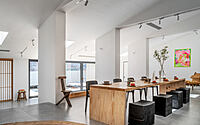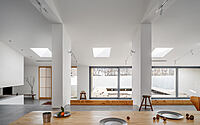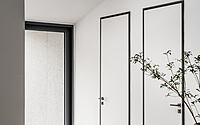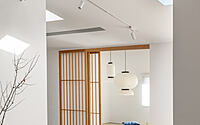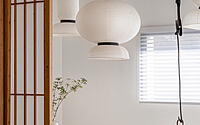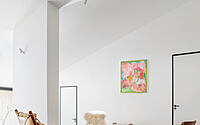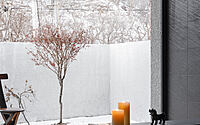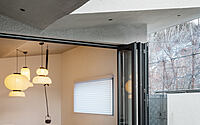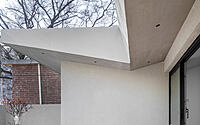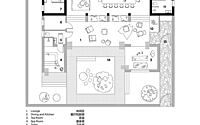The Roof House by Guò Bàn Ér
The Roof House is a contemporary house located in Beijing, China, designed in 2022 by Guò Bàn Ér.













Description
过半儿 guò bàn ér design agency adds natural daylight and comfort to an ordinary rural house.
Located around 60 km north of Beijing’s city center at the foothills of the Great Wall of China, the architects were given to add a modest extension to a vacant rural house. By extending the original roof slope of the existing dwelling, 过半儿 guò bàn ér constructed an additional 120 square meters of living area. The extension placed at the garden level creates a much-intended split level between the dining area and the living room. The newly added pitched roof shelters the core social areas of the house. The roof kinks up at its east-side and west-side, accommodating a tea room and a small spa area.
Four skylights flood the lounging area with additional daylight, and floor-to-ceiling windows on the formerly windowless north-side provide cross ventilation. The roof slope ends at over two meters in height, scaling the nine-meter-wide glass opening facing the garden to a fitting human scale. The exterior wooden deck frames the garden with its path and connects both wings of the house with the terrace of the living area. In summer, the folding glass windows of the tea room and the spa area and the large sliding doors of the living area open up, extending all domestic activities towards the garden. The cantilevering concrete roof provides cover for the timber deck, which serves as an extension of the footprint of the home and its indoor entertainment areas.
“Creating an airy main space which provides flexibility for a wide range of living activities was key,” says Sun Min, Co-founder of 过半儿 guò bàn ér.
The large open fireplace is a motif for the comfort added to the house and its contemporary rural character. However, the actual comfort stays somewhat invisible. Instead of replacing the rather non-descript existing building, the architects integrated it, driven by repurposing the existing structure, saving energy wasted in new construction. The architects retrofitted the building with a continuous exterior insulation envelope which continues on the building’s new extension. Insulted floors provide for an efficient air-to-water floor heating system that can switch to cooling mode during the hot summers of Beijing. An efficient electric heat pump powers the heating and cooling system providing pleasant room climates in winter and summer.
“We focused on creating high-quality living spaces that we can realize on a budget,” says Christian Taeubert, Co-founder of 过半儿 guò bàn ér. “We enjoy giving a vacant house a second life; transforming it from a dwelling with inflexible spaces into a place of active living,” he continues.
Sun Min says, “We want to offer models for a fitting transformation in the context of rural areas. We don’t want to recall villa typologies that stay empty shells; they have become all but too present in rural areas outside Beijing.”
The 240 square meter weekend home was realized on a 700.000 RMB construction budget and was completed in January of 2022 after a seven-month construction period.
